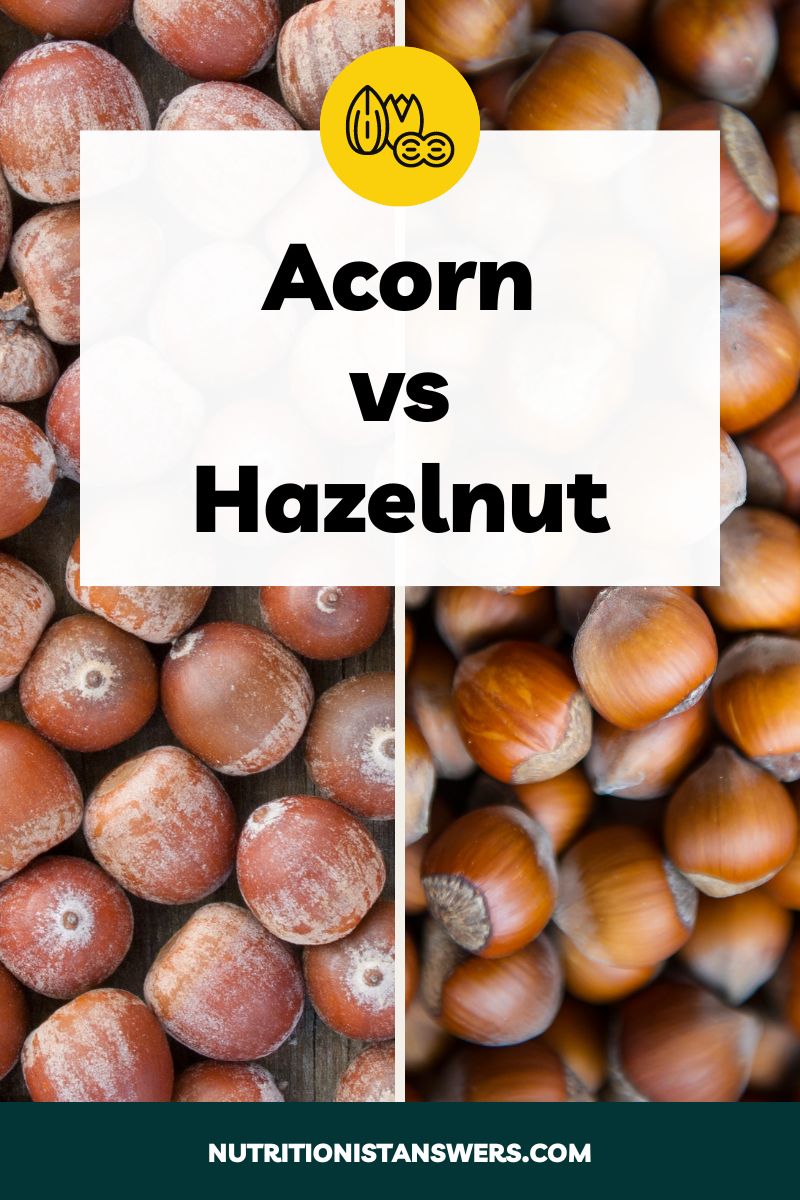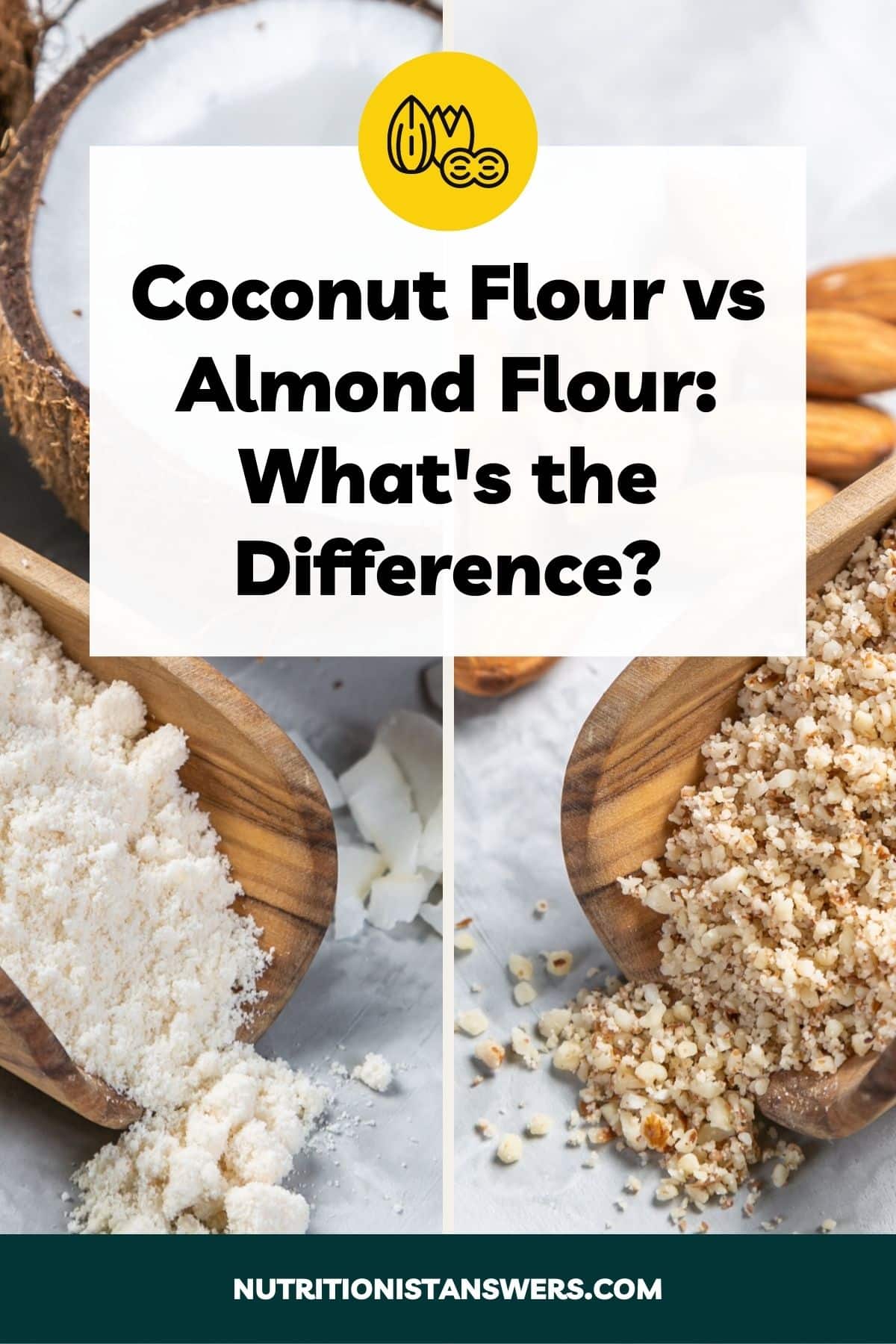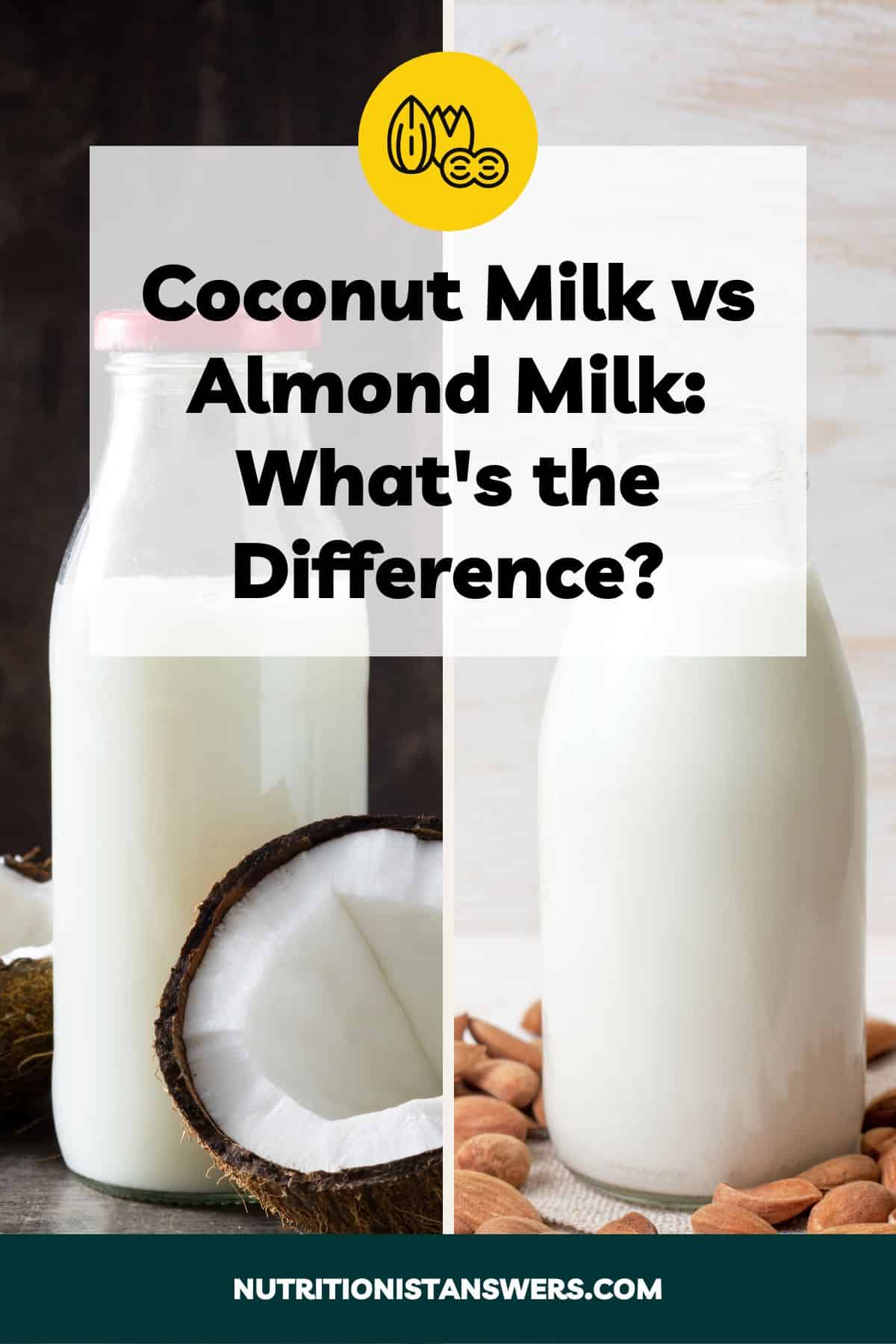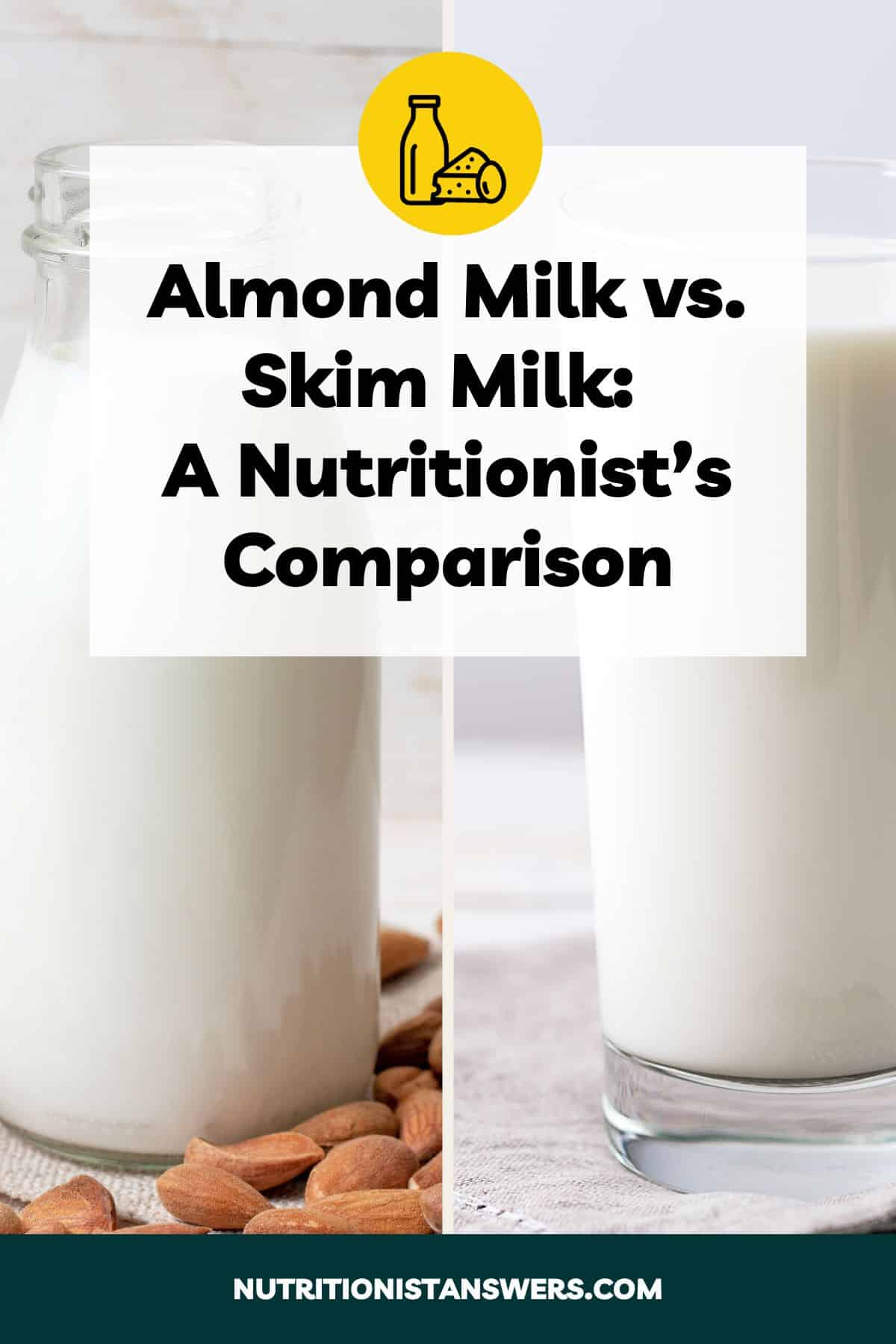Acorns and hazelnuts are two types of nuts that happen to look a lot alike — small and round with a hard brown shell.
However, there are some big differences in flavor, nutrition, and availability between these two unique nuts.
In this article, we’ll compare and contrast acorns and hazelnuts so you can decide which one is right for you.
Please note that this article contains affiliate links. If you click one of these links and make a purchase, we may earn a commission. As an Amazon Associate, we earn from qualifying purchases.
What are acorns?
Acorns are the nuts of trees belonging to the oak (Quercus) genus, which are found mainly in North America, Europe, and Asia (1, 2).
For centuries, acorns have been an important part of many cultures’ cuisines, but they haven’t been as widely consumed in recent years (1, 3).
They are small and round with hard, brown shells and a wood-like cap on top. The shell can be removed to reveal a smooth, golden brown edible nut.
Raw acorns have a strong bitter flavor due to the presence of tannins, a group of bitter and astringent compounds that act as part of a plant’s defense mechanism against predators (4).
After processing to remove tannins, acorns are left with a sweet and nutty flavor that pairs well with warm spices and grains.
Acorns can be used in a variety of dishes, including soup, bread, porridge, cake, and even coffee substitutes.
What are hazelnuts?
Hazelnuts, also called filberts, are the nuts of trees belonging to the hazel (Corylus) genus and are cultivated throughout Europe and the United States (mainly Oregon) (5, 6, 7).
They are small and oval-shaped with a hard, brown shell that can be cracked and removed to unveil a round edible kernel covered in dark brown, papery skin
Their skin is very bitter, so it is usually removed prior to eating. This can be done by roasting or boiling the hazelnuts, then rubbing them between your fingers until the skins slip off.
After the skins have been removed, hazelnuts taste very rich, nutty, and buttery with a hint of sweetness. Roasting deepens their flavor and gives them a crunchy texture.
These delicious nuts are commonly found in baked goods, chocolate hazelnut spread (AKA, Nutella), and cookies. They can also be used as a topping for salads or added to granola for an extra boost of flavor and crunch.
Acorn vs hazelnut
Acorns and hazelnuts have some similarities, but there are a few important differences in their flavor and the nutrients they provide.
Flavor comparison
Acorns have a nutty flavor with just a hint of sweetness. If they haven’t been leached to remove tannins, they can also taste quite bitter.
Similarly, hazelnuts taste nutty and slightly sweet, but they’re richer and more buttery. They have a papery skin that can contribute a bitter flavor if not removed before eating.
Both nuts can be used in a variety of sweet and savory dishes and pair well with warm spices, apples, winter squash, and roasted meats.
Nutrition comparison
Here’s a side-by-side comparison of the calorie and macronutrient content of acorns and hazelnuts, based on a 1-ounce (28-gram) serving size (8, 9, 10):
| Nutrient | Acorns (dried) (28g) | Hazelnuts (dried) (28g) |
| Calories | 144 | 178 |
| Protein | 2 grams | 4 grams |
| Fat | 9 grams | 17 grams |
| Saturated fat | 1.2 grams | 1.3 grams |
| Monounsaturated fat | 5.6 grams | 13 grams |
| Polyunsaturated fat | 1.7 grams | 2.2 grams |
| Carbohydrates | 15 grams | 5 grams |
| Fiber | 4 grams | 3 grams |
Calories
Acorns provide about 20% fewer calories than hazelnuts. There are 178 calories in a 1-ounce (28-gram) serving of hazelnuts, while an equal portion of acorns provides 144 calories.
Protein
Hazelnuts provide 4 grams of protein — that’s double the amount of protein found in acorns. However, both nuts are considered low-protein foods.
Fat
Compared to most other nuts, acorns are lower in fat. At 9 grams per serving, they contain about 50% less fat than hazelnuts, which provide 17 grams per serving. The higher fat content is what makes hazelnuts taste more buttery than acorns.
Carbohydrates
Acorns provide 3 times more carbohydrates than hazelnuts. A single serving of acorns contains 15 grams of carbs, while an equal serving of hazelnuts offers only 5 grams.
The higher carbohydrate content of acorns makes it easier to bake with acorn flour than with other nut flours.
Vitamins and minerals
Here’s a side-by-side comparison of the vitamin and mineral content of acorns and hazelnuts, based on a 1-ounce (28-gram) serving size (8, 10, 11):
| Nutrient | Acorns (dried) (28g) | Hazelnuts (dried) (28g) |
| Vitamin A | 392 mcg RAE (44% DV) | 0.3 mcg RAE (<1% DV) |
| Vitamin B1 (Thiamin) | 0.04 mg (3% DV) | 0.2 mg (17% DV) |
| Vitamin B2 (Riboflavin) | 0.04 mg (3% DV) | 0.03 mg (2% DV) |
| Vitamin B3 (Niacin) | 0.7 mg (4% DV) | 0.5 mg (3% DV) |
| Vitamin B5 (Pantothenic acid) | 0.3 mg (6% DV) | 0.3 mg (6% DV) |
| Vitamin B9 (Folate) | 33 mcg (8% DV) | 32 mcg (8% DV) |
| Vitamin B12 (Cobalamin) | 0 mcg (0% DV) | 0 mcg (0% DV) |
| Vitamin C | 0 mg (0% DV) | 2 mg (2% DV) |
| Vitamin D | Not listed | 0 mcg (0% DV) |
| Vitamin E | 3 mg (20% DV) | 4 mg (27% DV) |
| Vitamin K | Not listed | 4 mcg (3% DV) |
| Sodium | 0 mg (0% DV) | 0 mg (0% DV) |
| Potassium | 201 mg (4% DV) | 193 mg (4% DV) |
| Calcium | 15 mg (1% DV) | 32 mg (2% DV) |
| Phosphorus | 29 mg (2% DV) | 82 mg (7% DV) |
| Magnesium | 23 mg (5% DV) | 46 mg (11% DV) |
| Iron | 0.3 mg (2% DV) | 1.3 mg (7% DV) |
| Zinc | 0.2 mg (2% DV) | 0.7 mg (6% DV) |
| Copper | 0.2 mg (22% DV) | 0.5 mg (56% DV) |
| Manganese | 0.4 mg (17% DV) | 1.8 mg (78% DV) |
| Selenium | 0 mcg (0% DV) | 0.7 mcg (1% DV) |
| Choline | Not listed | 13 mg (2% DV) |
As you can see, acorns have significantly more vitamin A than hazelnuts, providing nearly half of your daily needs in a single 1-ounce serving.
Hazelnuts, on the other hand, are higher in thiamin (vitamin B1) and most minerals, including magnesium, copper, and manganese.
Both nuts contain similar amounts of vitamin E and most B vitamins.
Available forms
1. Whole (acorns and hazelnuts)
Whole acorns are rarely available for purchase in store or even online. If you live in a place where oak trees are plentiful, your best option is to forage for acorns on your own.
Whole shelled hazelnuts, on the other hand, can often be purchased from supermarkets and natural food stores or online here.
2. Flour (acorns and hazelnuts)
Although there don’t appear to be any companies that sell acorn flour, it can sometimes be found on sites like Etsy.
You can also make your own by leaching shelled acorns to remove the tannins, then grinding them in a food processor until they reach a flour-like consistency.
Hazelnut flour is sometimes available at natural food stores and can also be purchased online here
3. Oil (acorns and hazelnuts)
While you’re not likely to find acorn oil at the supermarket, it is available for purchase online here.
Roasted hazelnut oil can be found at many supermarkets and health food stores, and can also be purchased online here
Final thoughts
Both acorns and hazelnuts are delicious, nutrient-dense nuts with similar flavors that can be enjoyed in a variety of ways.
However, they have several key differences, including their fat and calorie content, vitamin and mineral composition, and availability.
Hazelnuts are lower in carbohydrates, higher in fat and minerals, and more widely available, while acorns are lower in fat, higher in carbs and vitamin A, and usually must be foraged.
So which one is better? Well, it’s up to your own personal taste and nutrition needs! Both can be fabulous additions to your diet.
Want to learn more about acorns?
Check out our in-depth post:
Amy Richter is a Registered Dietitian Nutritionist based in Missouri. She is an experienced nutrition writer and medical advisor for Healthline and Medical News Today. Amy is passionate about all things food-related and enjoys translating complex science into easy-to-understand articles.





